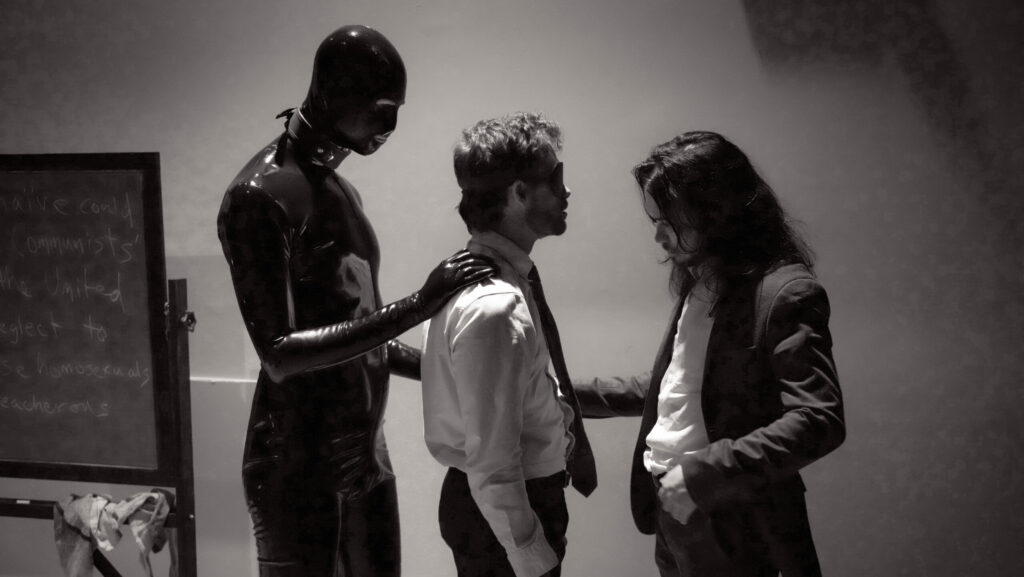
Last Thursday night, the Metropolitan Opera presented the premiere of this season’s revival of Verdi’s Nabucco, the first of 14(!) performances this season. This revival comes as the Jewish High Holy Days reach their customary conclusion of feverish post-fast noshing. How appropriate, then, that the Met should present this supposedly “Jewish” opera, after many in the audience had just spent twelve days immersed in the genuine article.
As I settled in for an often rocky three-hour romp across the Levant by way of Busseto,the relationship between Judaism, intermarriage and conversion were on my mind the same way they seemed to be on Verdi’s. Even at my New Jersey congregation, the Rabbi invited the non-Jewish parents of Jewish children in attendance to join him and receive the priestly blessing for their role in ensuring the future of our community during services on Monday. Such an act on the holiest day of the Jewish calendar would have been unthinkable 20 years ago.
And just one night before, Rabbi Angela Buchdahl of Manhattan’s Central Synagogue delivered a detailed sermon in which she admonished the Jewish community’s continued suspicion of interfaith marriage. Amongst her points, that the word for conversion in Hebrew derives itself from the verb l’hitgayer: to make someone into a stranger. It follows that one who chooses to convert to Judaism must first become, entering into a state of estrangement and exile in order to join a race so often cast as strangers. Such an act, she argues, “calls us to empathy, compassion, and justice–the essence of what it means to be a Jew.”
At its heart, Nabucco is a classic Orientalist conversion story in Semitic clothing. Fenena’s turn to the Dio di Giuda bears more resemblance to Oronte’s acceptance of Christ in I Lombardi alla prima crociata than it does to any historical or modern Jewish conversion narrative. Yet, Temistocle Solera’s libretto is acutely aware of what it means to be made a stranger. Nabucco must be a stranger to his own mind before he can become a moral individual, while Abigaille’s discovery that she is the child of slaves and thus a stranger in her supposed home drives her erratic power grab, subsequent attempt to destroy the Hebrew slaves, and her improbable supplication to their god in the final scene. Indeed, Nabucco, the hated straniero whom Zaccaria swears shall never sit upon David’s throne, redeems Zion and so proves the supremacy of their god, ensuring the survival of the race and its faith.
Even if Nabucco was subsumed first by the ethnonationalist myth making of the Kingdom of Italy, then by Israeli Zionists, it retains the ability to speak to strangers in our midst and complicate the narrative of who belongs and who does not.
Alas, the Met’s production, originally mounted by the late Elijah Moshinsky in 2001 and directed in revival by J. Knighten Smit, fails to engage critically with this theme or any other present in the work or its much-heralded legacy. It is content to present a sword-and-sandal image of the ancient world, replete with faux davening in a shoddy Tabernacle, garish Pagan deities illuminated by torchlight, and costumes that answered the question, “What if Maria Montez wandered into a high school production of Fiddler on the Roof?”
The set, which rotated between a heap of limestone representing Solomon’s Temple and Nabucco’s throne room in Babylon, forced the singers to settle in a narrow strip located far downstage or clamber up and down stairs, resulting in several instances in which traffic jams or overcrowding blunted any dramatic tension. Nabucco’s triumphant entrance into the Temple barely registered amidst the Assyrians efforts to corral the Hebrews into orderly packs in the limited space provided. The singers mainly deposited themselves on the apron of the stage, and the static blocking did little to flesh out the relationships between the principals beyond stock gestures. The tableau of the imprisoned Hebrews during “Va, pensiero,” however, was effective in conveying the chorus’s wistful nostalgia.
The singing was a mixed bag. As Nabucco, George Gagnidze lacked the heft and intensity to pull off the tyrant of the first two acts, but his warm tone ensured that the character’s later feebleness and remorse felt genuine. He was most moving in the “Deh, perdona” duet, where he brought a softness to the king’s pleading. Tackling the punishing role of Abigaille, Liudmyla Monastyrska stalked and smirked her way around the stage, obviously relishing in her character’s wickedness. While the sheer power of her soprano was impressive, she often whooped up to the high notes and fudged the more elaborate coloratura, especially on descending lines. Still, the permanent twinkle in her eye and the smoky quality she brought to the character’s softer moments brought a much-needed jolt of energy to the evening’s proceedings.
As Fenena, the good daughter, Maria Barakova was a rather frigid counterpart to Monastyrska’s fiery rebel. Her soft-grained mezzo is not particularly distinctive, but she displayed ample power during the Act I trio. One wished for a more fluid line to convey the spiritual raptures of “Oh, dischiuso e il firmamento,” however. SeokJong Baek made a promising Met debut as Ismaele; his ringing top and muscular tone projected well throughout the hall, and he exuded an appropriate level of ardor. Dmitry Belosselskiy lended his resonant bass to Zaccaria’s pronouncements, but the bottom of his voice often came across a brittle and tired, which is understandable considering he had sung in Verdi’s Requiem the night prior. Le Bu and Scott Scully impressed as the High Priest of Baal and Abdallo, respectively.
Daniele Callegari led a crisp reading of the score and captured the piece’s propulsive, youthful energy. The Metropolitan Opera Chorus was the true star of the evening, bringing their burnished tone and acute musicality to some of the most ravishing choral writing in the operatic canon. Hopefully, this long run of Nabucco will serve to highlight the superb work of Chorus Master Donald Palumbo in his farewell season.
As we enter Hebrew year 5784 and a new season at the Met, let us pray that Maestro Verdi’s work is handled with greater sensitivity and intelligence going forward.
Photos: Marty Sohl
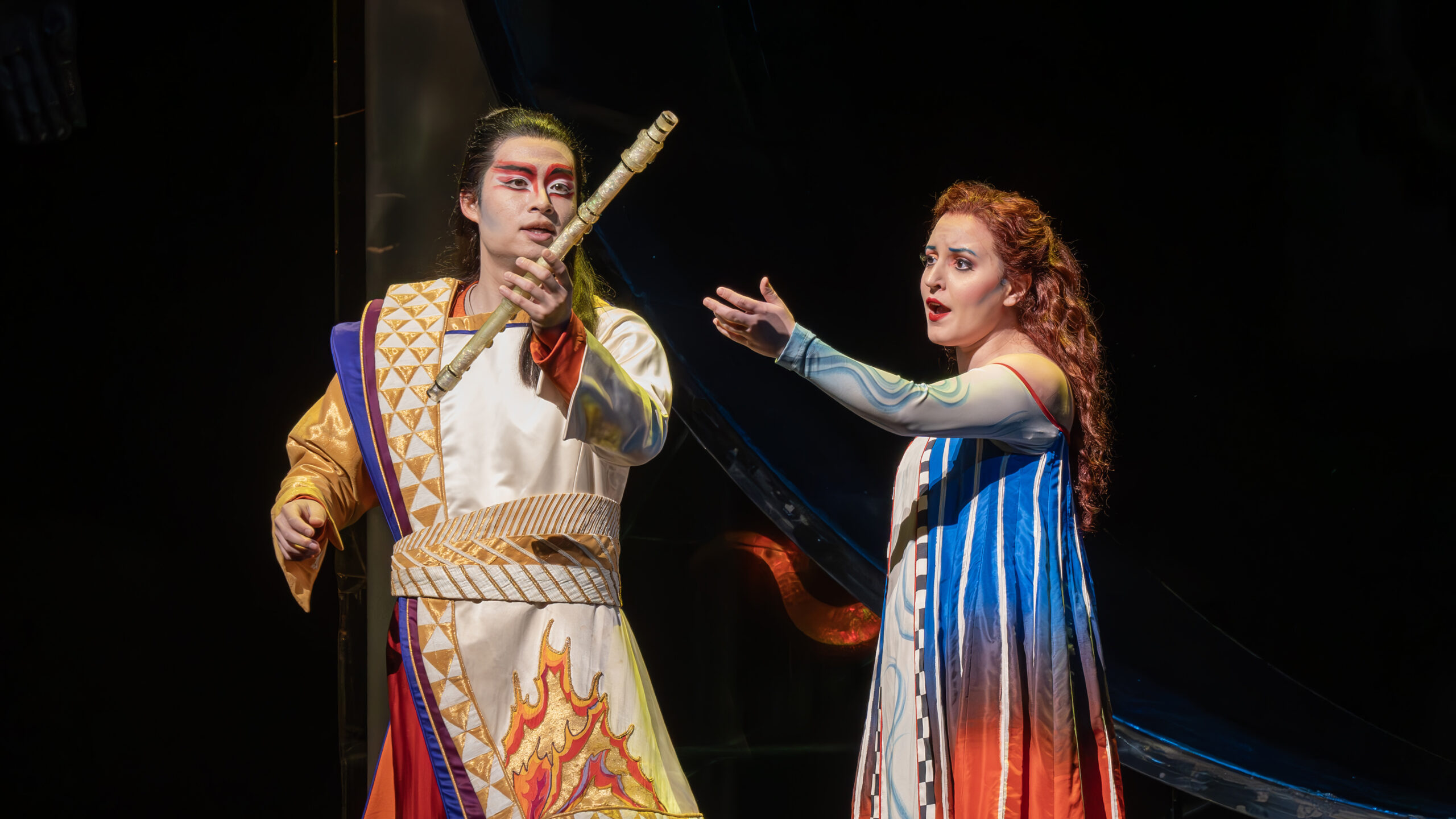
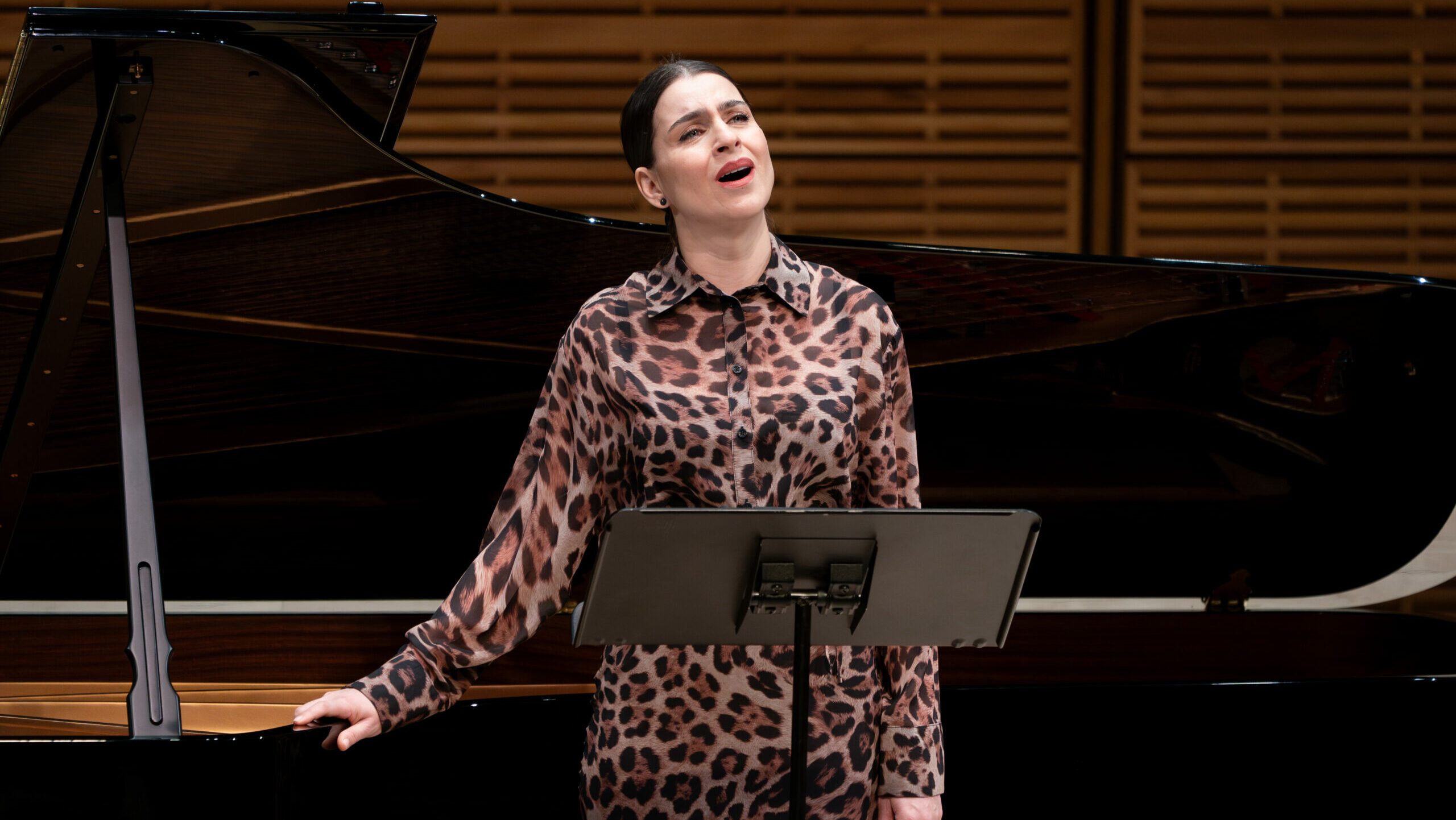












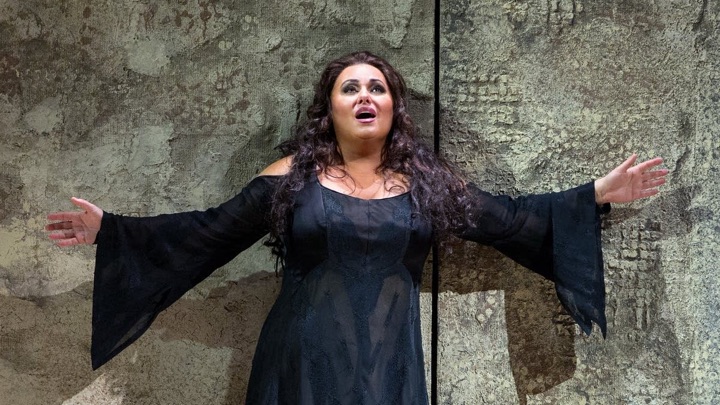
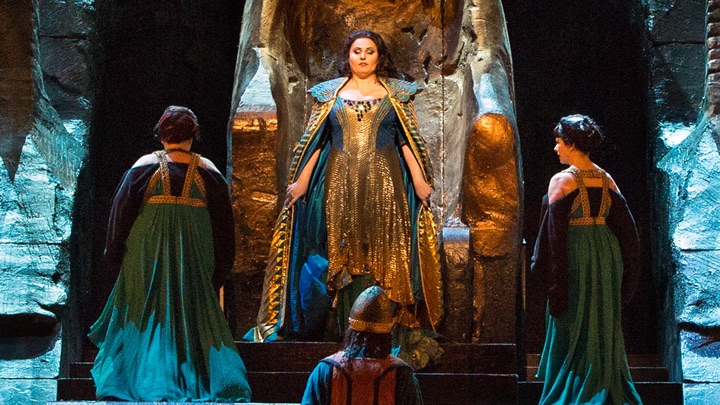





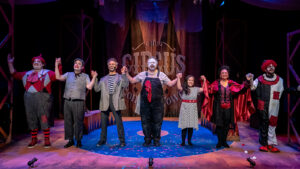
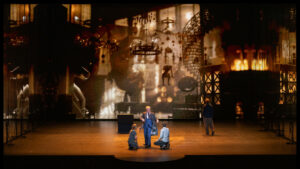



Comments